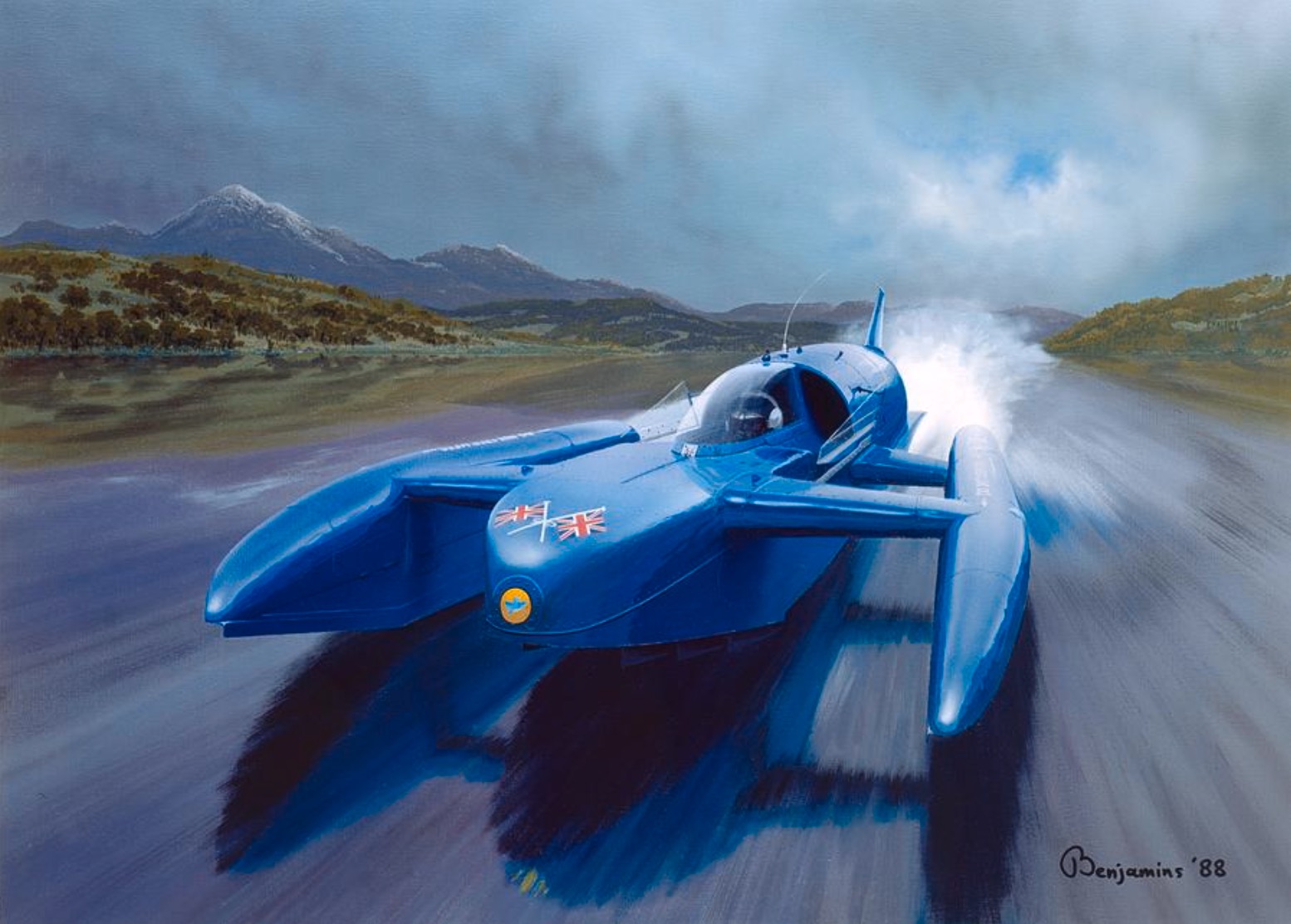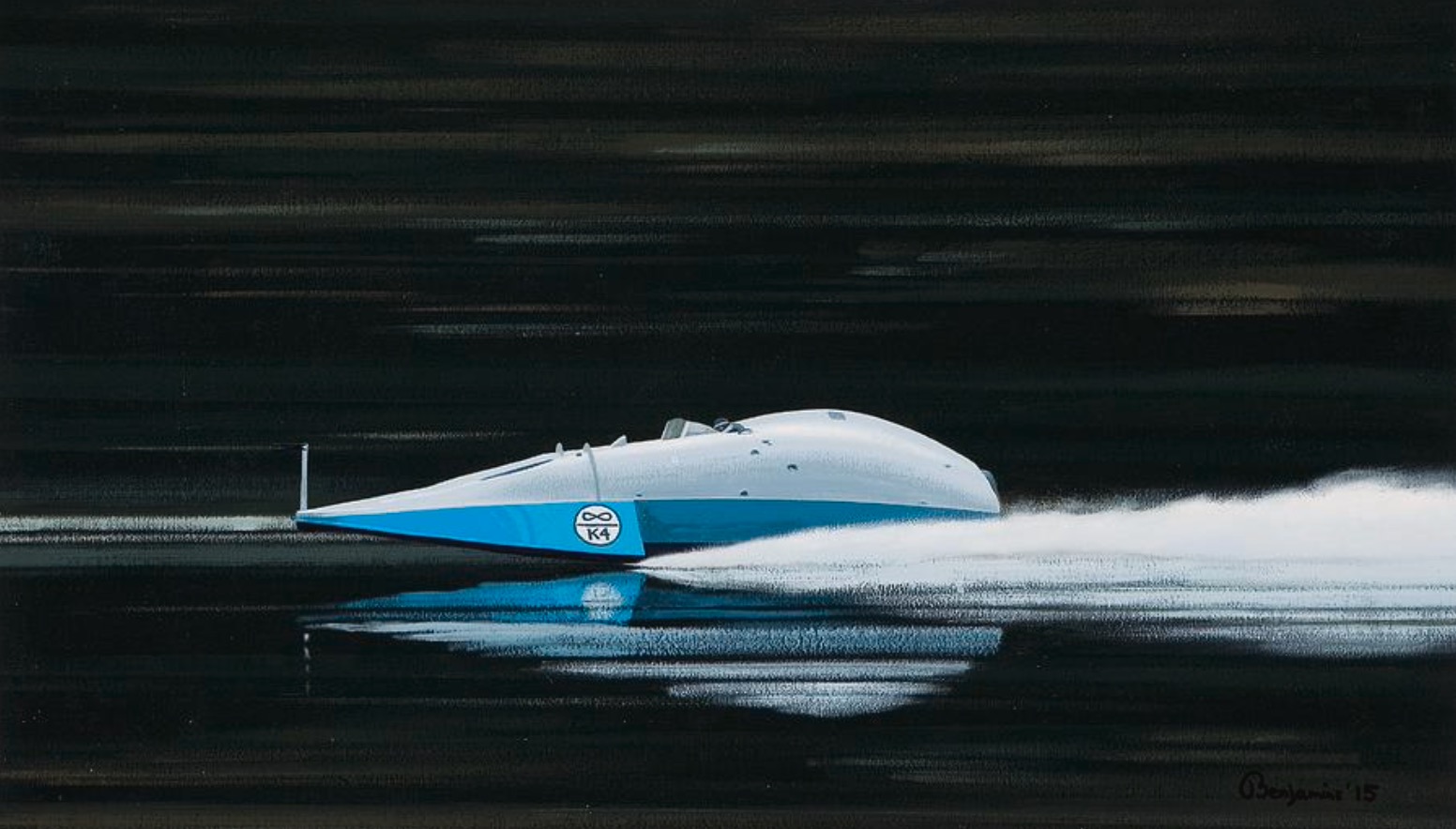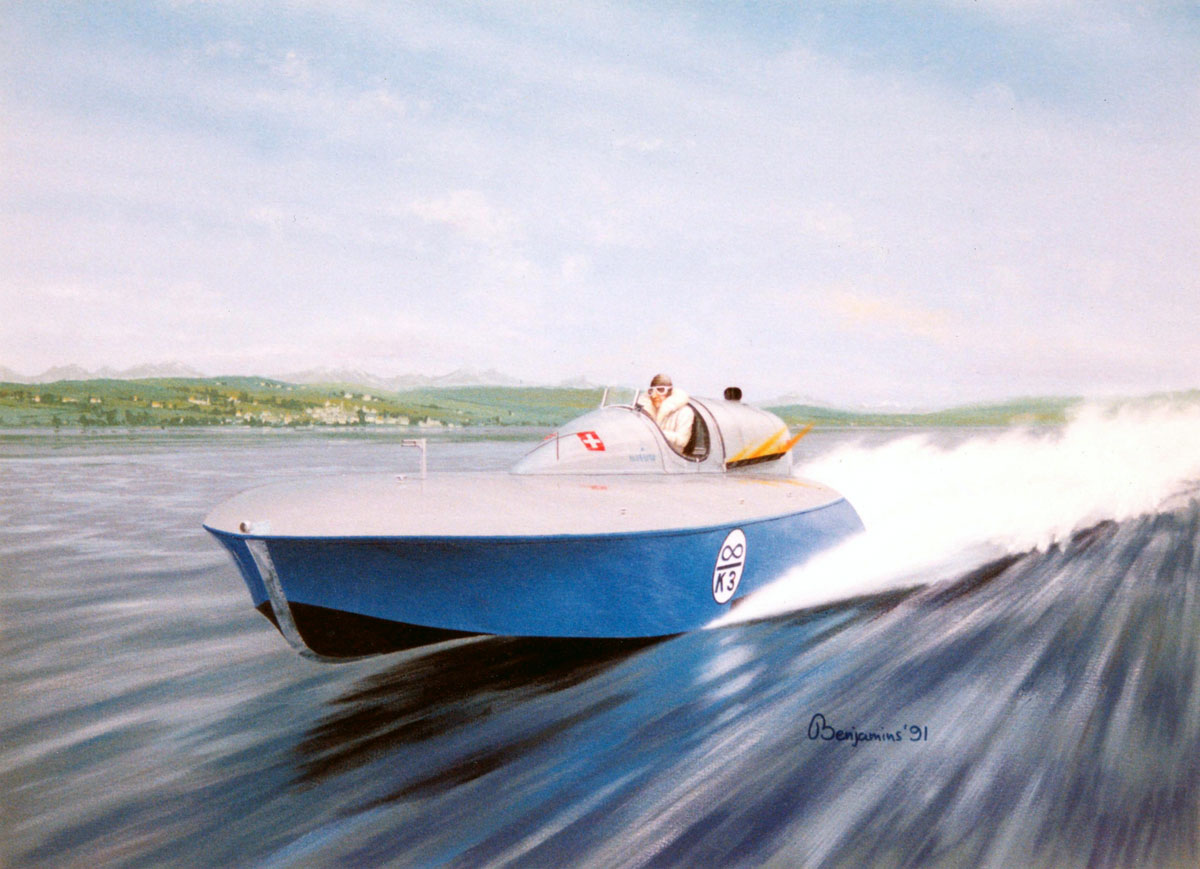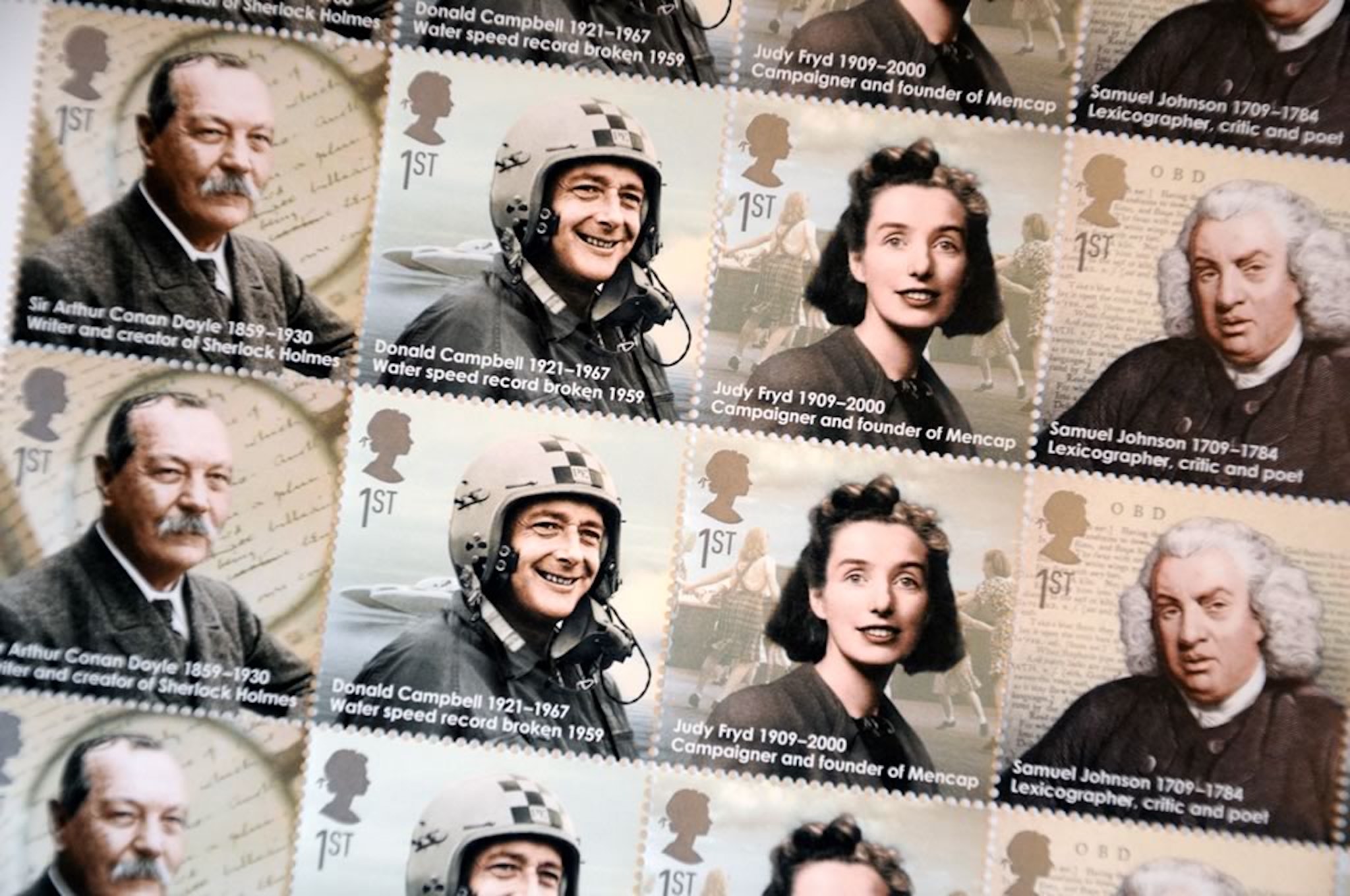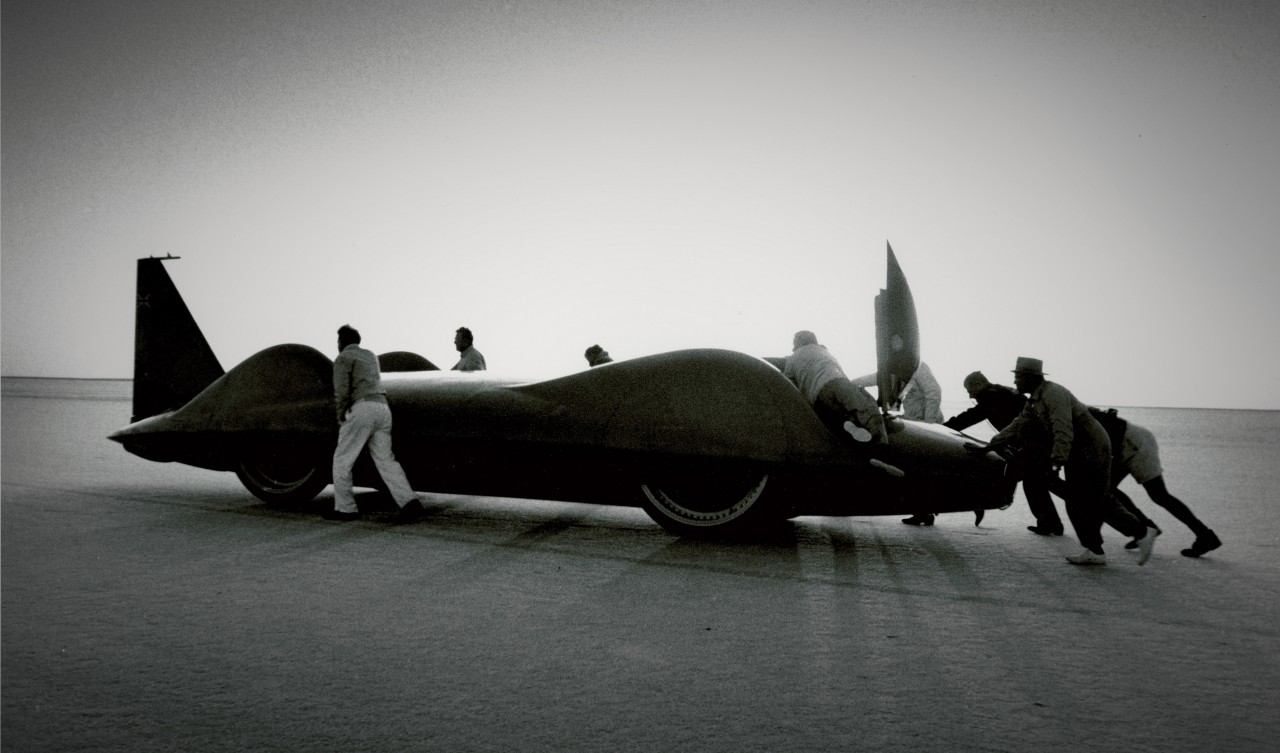
World Records
Australia & Bluebird CN7
Following its crash in Utah, CN7 was rebuilt in 1962, with modifications including differential locks and a large vertical stabilising fin. After initial trials at Goodwood and further modifications to the very strong fibre-glass cockpit canopy, CN7 was shipped this time to Australia for a new attempt at Lake Eyre in 1963.
The Lake Eyre location was chosen as it offered 450 square miles of dried salt lake, where rain had not fallen in the previous 20 years, and the surface of the 20 miles long track was as hard as concrete. As Campbell arrived in late March, with a view to a May attempt, the first light rain fell.
Campbell and Bluebird CN7 were running by early May but once again more rain fell, and low-speed test runs could not progress into the higher speed ranges. By late May, the rain became torrential, and the lake was flooded. Campbell had to move the CN7 off the lake in the middle of the night to save the car from being submerged by the rising flood waters. The 1963 attempt was over. Campbell received very bad press following the failure to set a new record, but the weather conditions had made an attempt out of the question. BP pulled out as a sponsor at the end of the year.
Campbell and his team returned to Lake Eyre in 1964, with sponsorship from Australian oil company Ampol, but the salt surface never returned to the promise it had held in 1962 and Campbell had to battle with CN7 to reach record speeds over 400 mph. After more light rain in June, the lake finally began to dry enough for an attempt to be made.
Land & Water Speed Records
Campbell's Unbeaten Double Record
Donald Campbell CBE became the only man to break the world land and water speed records in the same year. He reached an average speed of 276.33mph in his speedboat Bluebird K7 on Lake Dumbleyung in Perth, Western Australia.
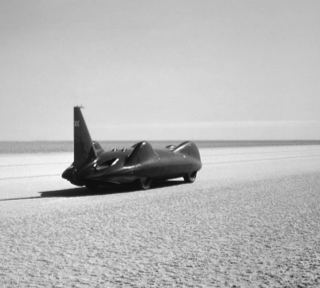
Land Speed Record
17th Jul 1964 - 403.10 mph
Lake Mead,
USA
Donald Campbell
OBE,, Bluebird CN7
Donald broke the land speed record in July on Lake Eyre in Australia with a speed of 403.1mph. He was disappointed with the record speed, as the vehicle had been designed for 500 mph.
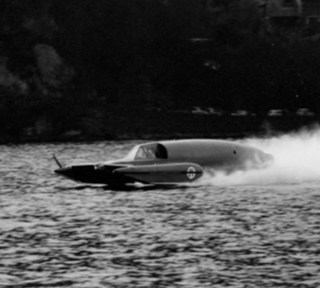
Water Speed Record
31st Dec 1964 - 276.33 mph
Lake Dumbleyung,
Australia
Donald Campbell
OBE,, Bluebird K7
Donald Campbell became the first man to break the world land and water speed records in the same year. He reached an average speed of 276.33mph in Bluebird K7, on Lake Dumbleyung in Australia.
I think it’s worth a try... Let's go, skipper!
Donald had been trying to realise his record-breaking attempt for months at various locations in Australia. Each time he has been frustrated. The weather at his first choice of location, Lake Bonney in South Australia, proved too unpredictable.
Then, he moved to Lake Dumbleyung, near Perth, on 16 December, only to be delayed by wild ducks, which could not fly away because they were moulting. Again, the weather was the next setback, as persistent easterly winds raised waves up to 2ft high, making any attempt impossible.
With time running out for him to achieve his goal of breaking both speed records in the same year, he began considering a move to a third lake just south of Perth. Then suddenly, on the last possible day, the winds eased and the lake became flat calm. Conditions were rated 95% suitable, and the chief mechanic, Leo Villa, radioed to Donald: "I think it’s worth a try –
Donald broke the land speed record in July on Lake Eyre salt flat in central Australia, with a speed of 403.1mph. He was disappointed with the record speed, as the vehicle had been designed for 500 mph CN7 covered the final third of the measured mile at an average of 429 mph, peaking as she left the measured mile at over 440 mph.
Had the salt surface been hard and dry, and the full 15 mile length originally envisaged, there can be no doubt that CN7 would have set a record well in excess of 450 mph and perhaps close to her design maximum of 500 mph, a speed that no other wheel driven car had approached.
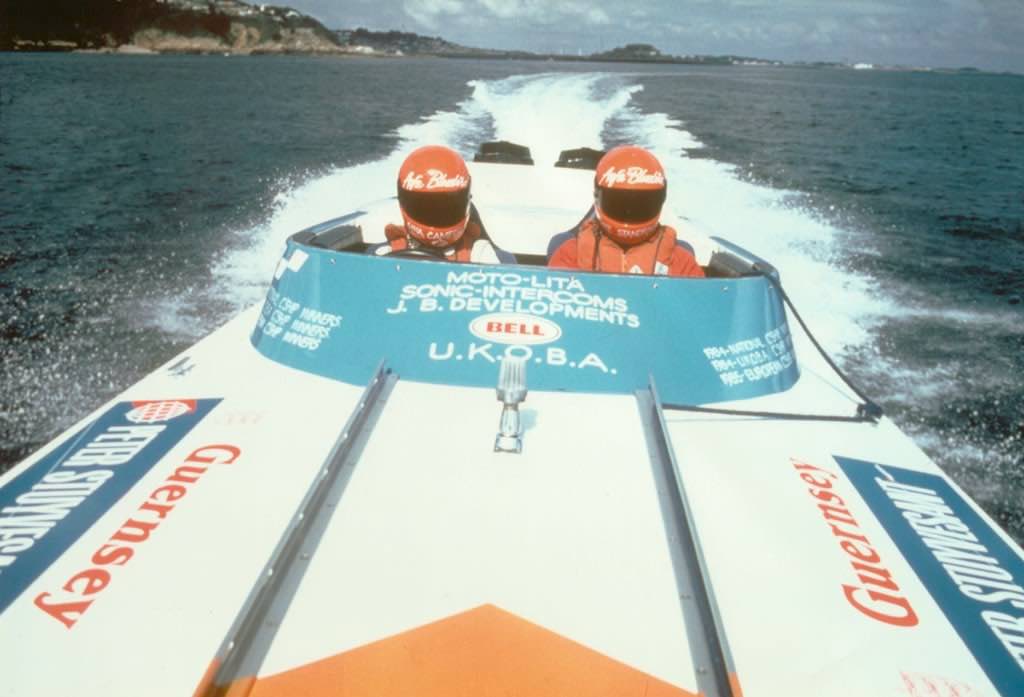
Water Speed Record
1st April 1990 - 166 mph
Lake Karapiro, Australia
Gina Campbell QSO, Agfa Bluebird
Gina broke her own previously set World Water Speed Record in New Zealand, achieving 166 mph in a three point hydroplane.
Next:
Bluebird In Europe


